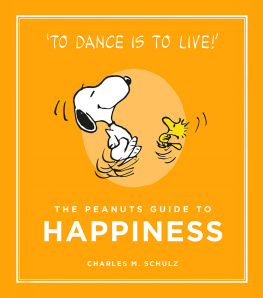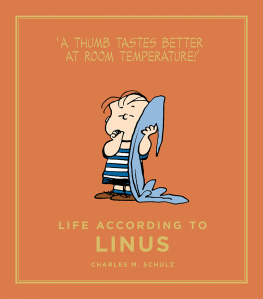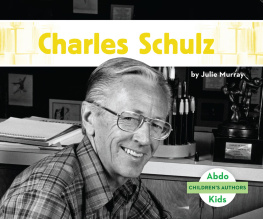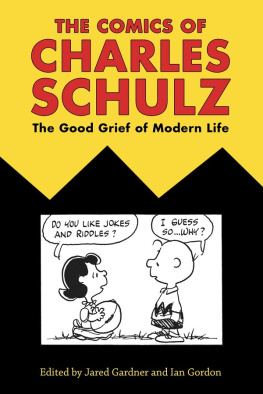
SPARKY WITH CHARLIE BROWN / C. 1958

For my favorite Sparky fans: Zack, Emma, Matthew, and Benjamin B. G.
Text 2010 by Beverly Gherman.
All rights reserved. No part of this book may be reproduced in any form without written permission from the publisher.
All cartoon strips: PEANUTS United Feature Syndicate, Inc. PEANUTS is a registered trademark of United Feature Syndicate, Inc. All rights reserved.
constitutes a continuation of the copyright page.
ISBN 978-1-4521-3398-0
The Library of Congress has cataloged the previous edition as follows:
Gherman, Beverly.
Sparky : the life and art of Charles Schulz / by Beverly Gherman.
p. cm.
ISBN 978-0-8118-6790-0
1. Schulz, Charles M. (Charles Monroe), 19222000. 2. CartoonistsUnited StatesBiography. I. Title.
PN6727.S3Z68 2010
741.56973dc22
[B]
2009005814
Book design by Jennifer Bostic, Paper Plane Studio.
Typeset in Omnes.
Chronicle Books LLC
680 Second Street, San Francisco, California 94107
www.chroniclekids.com
TABLE OF CONTENTS
Acknowledgments:
My gratitude to Jeannie Schulz, who opened her heart to me and shared the latest writings about Sparky; to Monte, Craig, Amy, and Jill, who also shared insights about their dad. They made it a joy for me to write about Charles Schulz and his Peanuts kids.
I would like to give special thanks to Lisa Monhoff, archivist at the Charles M. Schulz Museum and Research Center, Santa Rosa, California, and to Laura Davis at United Feature Syndicate, Inc. They were invaluable in locating material to be included in the book.
Authors Note
While I was in college, the Peanuts comic strip was the first thing I read in the mornings newspaper. Without fail, Charles Schulz seemed to capture my daily worries. He knew the way people of all ages suffer. Although his characters were young kids, they were struggling with popularity problems, poor grades on school tests, and misunderstandings between friends, just as I was. I could have made appointments at the counseling center on campus to get advice, but how much better to find my answers in Peanuts, along with a smile or laugh.
Who was this Charles Schulz, the man who created the Peanuts cartoon strips for fifty years? How I wish I had known him! Instead I read about him, talked to his family and friends, and, best of all, read his strips and books and watched his videos. Through them all, I discovered how kind and generous and hardworking he was. He was born with a great talent but he never took it for granted. Throughout his life he always tried to improve his original ability.

(ONE)
Always Drawing
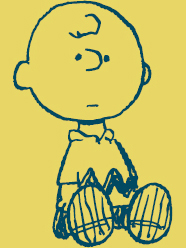
From the beginning, Charles Schulz intended to draw cartoons. Not just any cartoonsthe very best cartoons. He drew all the time. No matter where he was, he pulled out a stubby pencil and a wrinkled piece of paper so he could sketch a friend or copy a picture from the latest Big Little Books he collected. He noticed the way an arm popped out of a friends shoulder or the way his collar curved around his neck. From his books he observed the way Popeyes muscles rippled under his rolled-up shirtsleeve or the way he gobbled up his spinach. Observing was just as important as drawing. He called it mental drawing.
Charles Monroe Schulz was born on November 26, 1922. Before he was a week old, his uncle nicknamed him Sparky. For some reason the baby reminded him of Sparky, the sad-eyed horse from the popular comic strip Barney Google who uexpectedly became the big winner of a race. Yet, Sparky stuck, and it turned out to be the perfect nickname for a talented boy who loved comic strips and who would become a winner in the cartoon world.
When Sparky was a kid, everybodychildren and adultsread comics. There was no television and no electronic games. Even Sparkys parents liked comics. And while they didnt know anything about the comics business, they thought Sparkys drawings were good, and they encouraged him to follow his dreams.
Although Sparkys parents only had third-grade educations, they both were hardworking, sensible people. Carl Schulz opened his St. Paul, Minnesota, barbershop early in the morning and kept it open until late at night. He made thirty-five cents for each haircut and pennies more for shaves. It took many haircuts and many shaves to pay the rent.
Sparky often met his dad at the barbershop. Carl was always happy to see Sparky, but he never stopped cutting a customers hair. Or, if he was cutting Sparkys hair when an important customer came into the shop, Carl shooed Sparky out of the barbers chair and made him wait on the benchsometimes with half a haircut and a great deal of embarrassment.
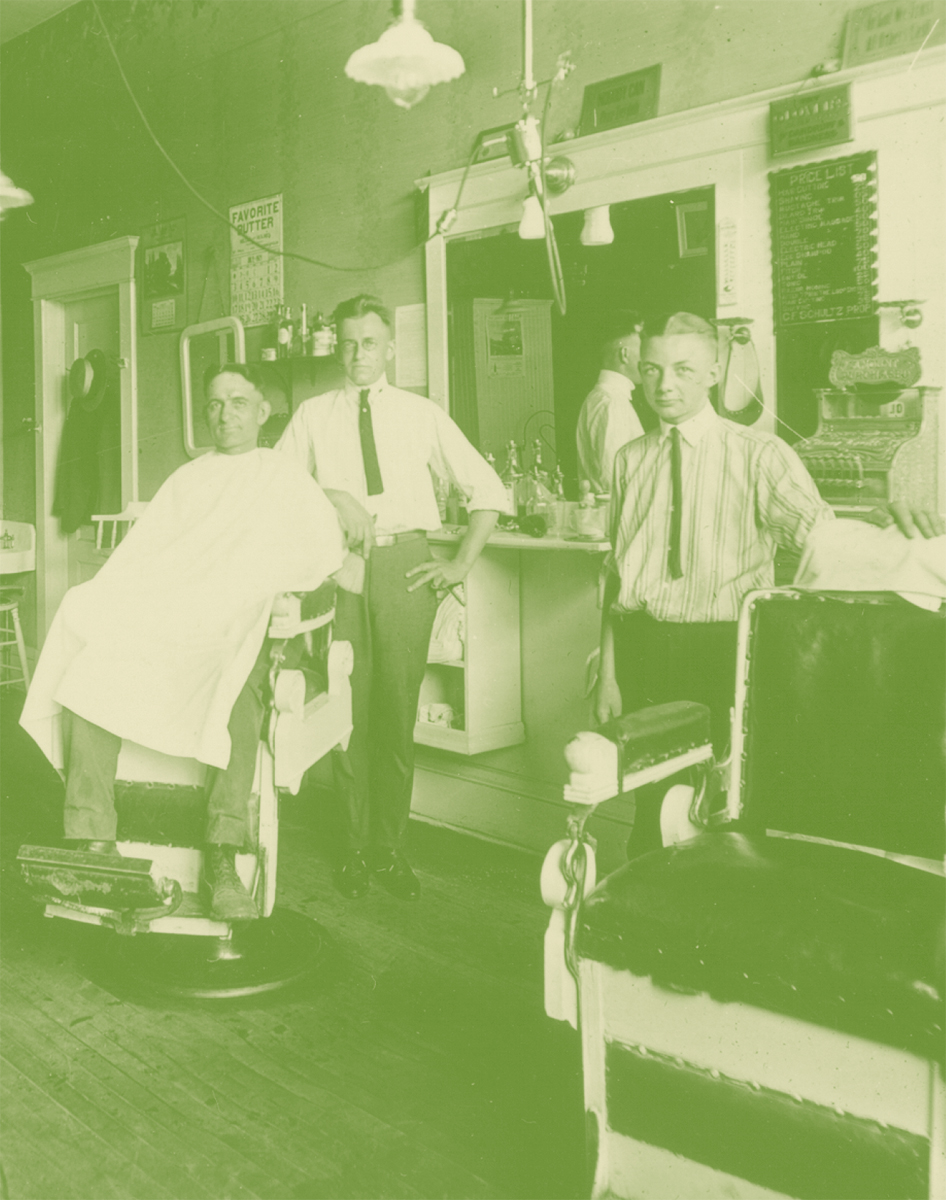
INSIDE CARLS BARBER SHOP / C. 1921

Perhaps this was when Sparky began collecting insults like other kids collected stamps. He used them later in his cartoon strips, thinking that his readers would understand those painful insults and might be able to sigh or chuckle with him.
Sparkys father even worked late on Saturday nights. Father and son would walk home together. On the way, they would stop at the nearby drugstore to pick up two Minneapolis newspapers. They loved reading the funny pages together, analyzing the comics endlessly, trying to guess what might happen next.
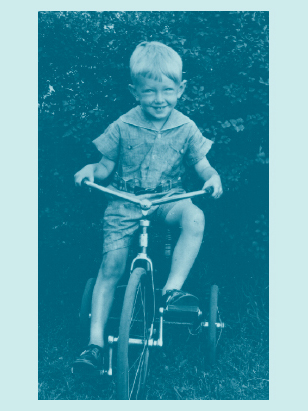
SPARKY RIDING HIS TRICYCLE / C. 1928
Often on Sunday mornings, Sparky and his parents would climb into their Ford and drive across the state line into nearby Wisconsin to visit Denas Norwegian family at their farm.
Carl greatly valued his car. He took good care of it and was aware that not everyone could afford to own an automobile.
Dena had a reputation for making the most delicious pies. She would rise early in the day to shape her flaky crust and fill it with apples or lemon curd or fresh berries to take to her family. Sparky would carry the pie on his lap all the way to the farm. He held it carefully, trying not to jiggle it too much.
Concentrating on the pie helped him avoid thinking about what was coming next. They were always greeted by barking dogs who attacked the fenders of the car and frightened Sparky. Next came the noisy cousins pulling on him to play. Sparkys mother made Sparky dress up in a freshly ironed shirt and fancy suit, even though his cousins were running about in short knickers and cotton shirts stained from grass and farm chores. He was a city kid who was not comfortable among all the animals and dirt roads of the farm. And his cousins teased him about his wanting to draw instead of going outside to play with them.
He hated those trips.
Next page

